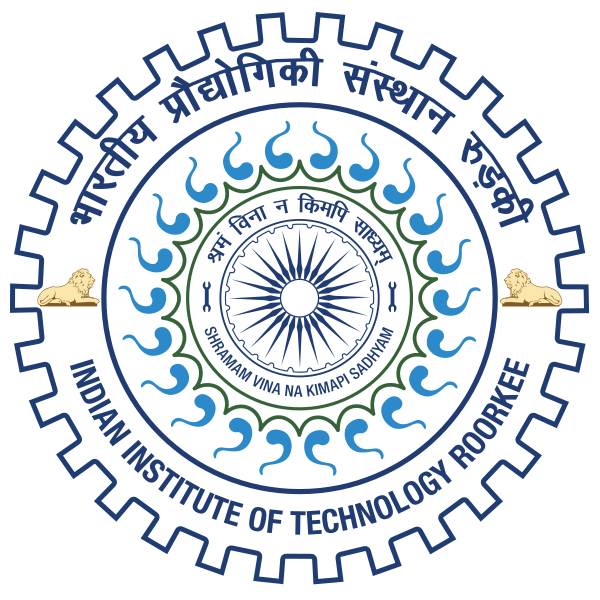Please use this identifier to cite or link to this item:
http://localhost:8081/jspui/handle/123456789/18280| Title: | NANOTECHNOLOGICAL INTERVENTION FOR MIXOTROPHIC MICROALGAE CULTIVATION AND BIOENERGY GENERATION |
| Authors: | Rana, Mohit Singh |
| Issue Date: | Dec-2022 |
| Publisher: | IIT, Roorkee |
| Abstract: | The economic viability of microalgae-based biofuel production has always been in a dilemma due to incommensurate biomass production, impaired quality of biofuel precursors, and complex microalgal biomass structure. In view of the associated challenges and opportunities with microalgae-based biofuels several technical interventions were attempted, which includes using waste glycerol and nanoparticles to stimulate microalgae growth and accumulation of biofuel precursors. In addition, microwave-assisted pretreatment was investigated for the maximal recovery of biofuel precursors. Subsequently, a thorough techno-economic assessment for microalgae cultivation and biofuel production was performed under experimentally optimized conditions. Microalgae were cultivated under mixotrophic mode using glycerol as a low-cost carbonaceous source. Further, iron oxide nanoparticles (IONPs) were investigated to stimulate the production of microalgal biomass and biofuel precursors under mixotrophic mode. In result, Chlorella pyrenoidosa was observed as a robust strain with the highest biomass yield. Glycerol at a concentration of 3 g L-1 enhanced the growth of C. pyrenoidosa by 13% with a maximum biomass concentration of 1.43 g L-1. Further, IONPs supplementation at ≥10 mg L-1 dose in mixotrophic culture elevated the growth of C. pyrenoidosa by 20%. IONPs’ dose ≥ 5 mg L-1 was found to raise the lipid accumulation significantly by 59%. Under IONPs exposure, C. pyrenoidosa accumulated lipids up to 27% dry weight basis, whereas only 17% dry weight basis lipid accumulation was attained without IONPs supplementation. Overall, the findings signify cumulative effect of mixotrophy growth and IONPs to further stimulate the growth and lipid content of C. pyrenoidosa. Excessive reactive oxygen species (ROS) generation was observed at elevated IONPs level, which was noted as a key reason for increased lipid production. Moreover, the ROS generation differed on species basis, which imparted impact on lipid accumulation. Reactor-scale studies were carried out to understand the potential of microalgal biomass for biofuel production. C. pyrenoidosa was cultivated in a photobioreactor (PBR) and microalgal biofilm reactor (MBR) at optimized conditions in wastewater in the presence of glycerol and IONPs. Mixotrophic microalgae cultivation in PBR was observed to enhance the microalgal biomass growth with a maximum yield of 1.35 g L-1 and biomass productivity of 3 g m-2 d-1. MBR was observed to attain higher biomass productivity (up to 10.14 g m-2 d-1) compared to that obtained in PBR. Further, the microalgae cultivated in PBR under mixotrophic mode was observed with 109.52% higher lipid accumulation compared to that for phototrophic growth. However, MBR-grown biomass was noted with only 16% rise in lipid accumulation under mixotrophic conditions. A detailed analysis of fatty acids showed that PBR grown mixotrophic microalgal biomass was superior to obtaining vehicle engine-grade biodiesel. On the other hand, MBR-grown biomass was noted to have better suitability for biogas production. Moreover, the IONPs supplementation was observed to enhance the production of methane-rich biogas. The results indicate that the culture hydrodynamics greatly influences the microalgae growth, metabolism, and biochemical composition. C. pyrenoidosa cultivation in MBR was noted for a higher nutrient removal (77, 98 and 74% removal of nitrate, phosphate, and chemical oxygen demand (COD), respectively) from wastewater compared to that for PBR. Thus, the MBR provided a higher biomass productivity with enhanced nutrient removal from wastewater. Further, the results showed that under mixotrophy growth, microalgae secrete exopolysaccharides (EPS), which was noted to stimulate the biogas generation. On the other hand, the EPS-rich microalgal spent water can be recycled for high-density algae cultivation (about 250% higher biomass growth) in the presence of yeast extract at a dose of 2-6 g L-1. Microwave-assisted pretreatment was explored for the maximal recovery of biofuel precursors. A response surface methodology – Box Behnken design (RSM-BBD) was utilized to obtain the optimum conditions for wet biomass pretreatment and a mathematical model was devised. In result, the optimum conditions (microwave irradiation time of 5 min, power of 700 W, and microalgal biomass concentration of 2 g L-1) were found promising to enhance the lipid extraction by 55.32% compared to the untreated condition. Water as a polar solvent was observed to intensify microwave absorption, which further enhanced biomass pretreatment. Finally, a thorough techno-economic assessment was performed to assess the scale-up feasibility. Based on the experimental studies, various cases under rural village level scenarios were envisioned. Bioethanol production using C. pyrenoidosa cultivated in an MBR under the mixotrophic mode, with the involvement of farmers from 9 villages (1384.56 ton biomass production per year), was noted to be highly profitable with an internal rate of return (IRR) of 45%, return on investment (ROI) of 28.37% and payback period of 3.15 years. Followed by biodiesel and bioethanol production in a biorefinery approach using mixotrophic microalgae cultivated in an open raceway pond was noted profitable with an IRR of 26%, ROI of 9.30%, at a payback period of 7.9 years. Further, sensitivity analysis showed a higher influence of biofuel selling price followed by the cost of solvents for biodiesel production on overall profitability. Overall, the results indicate microalgae cultivation strategy and system size influence economic viability. |
| URI: | http://localhost:8081/jspui/handle/123456789/18280 |
| Research Supervisor/ Guide: | Prajapati, Sanjeev Kumar |
| metadata.dc.type: | Thesis |
| Appears in Collections: | DOCTORAL THESES (HRED) |
Files in This Item:
| File | Description | Size | Format | |
|---|---|---|---|---|
| MOHIT SINGH RANA 19901008.pdf | 12.28 MB | Adobe PDF | View/Open |
Items in DSpace are protected by copyright, with all rights reserved, unless otherwise indicated.

